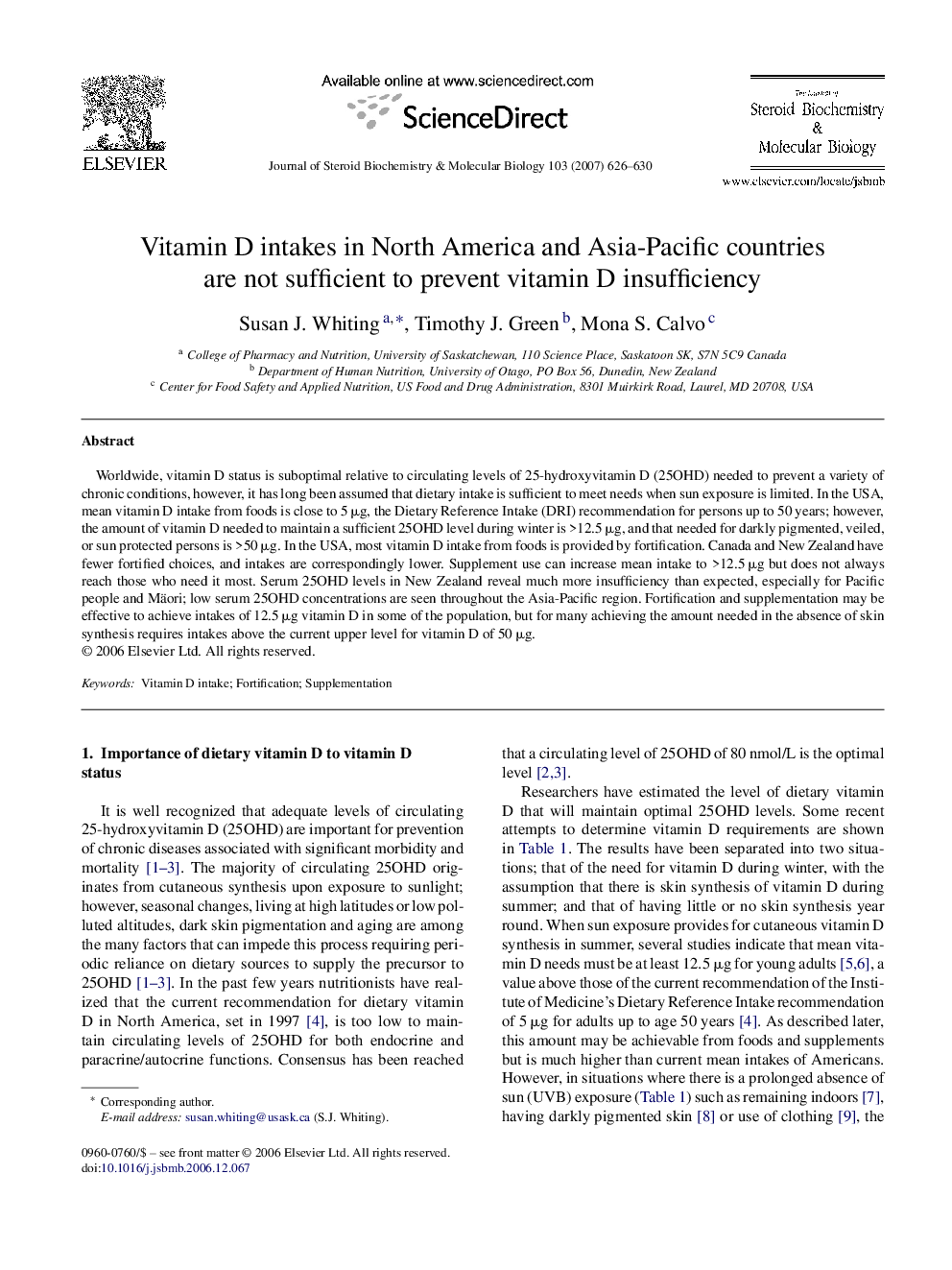| کد مقاله | کد نشریه | سال انتشار | مقاله انگلیسی | نسخه تمام متن |
|---|---|---|---|---|
| 1992596 | 1541078 | 2007 | 5 صفحه PDF | دانلود رایگان |

Worldwide, vitamin D status is suboptimal relative to circulating levels of 25-hydroxyvitamin D (25OHD) needed to prevent a variety of chronic conditions, however, it has long been assumed that dietary intake is sufficient to meet needs when sun exposure is limited. In the USA, mean vitamin D intake from foods is close to 5 μg, the Dietary Reference Intake (DRI) recommendation for persons up to 50 years; however, the amount of vitamin D needed to maintain a sufficient 25OHD level during winter is >12.5 μg, and that needed for darkly pigmented, veiled, or sun protected persons is >50 μg. In the USA, most vitamin D intake from foods is provided by fortification. Canada and New Zealand have fewer fortified choices, and intakes are correspondingly lower. Supplement use can increase mean intake to >12.5 μg but does not always reach those who need it most. Serum 25OHD levels in New Zealand reveal much more insufficiency than expected, especially for Pacific people and Mäori; low serum 25OHD concentrations are seen throughout the Asia-Pacific region. Fortification and supplementation may be effective to achieve intakes of 12.5 μg vitamin D in some of the population, but for many achieving the amount needed in the absence of skin synthesis requires intakes above the current upper level for vitamin D of 50 μg.
Journal: The Journal of Steroid Biochemistry and Molecular Biology - Volume 103, Issues 3–5, March 2007, Pages 626–630